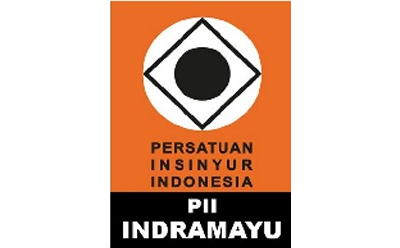SIFAT FISIKA PAPAN SEMEN DARI CAMPURAN LIMBAH BATANG SAWIT
Abstract
Full Text:
PDFReferences
Antaranews. (2023). Diakses dari (https://www.antaranews.com).
Armaya, R. (2012). Karakteristik Fisis dan Mekanis Papan Semen Bambu Hitam (Gigantochloa Atroviolancea Widjaja) Dengan Dua Ukuran Partikel. Skripsi. Universitas Sumatra Utara, Medan.
Engehausen, N., Benthien, J. T., & Lüdtke, J. (2024). Influence of Particle Size on the Mechanical Properties of Single-Layer Particleboards. Fibers, 12(4), 32. (https://doi.org/10.3390/fib12040032)
Ginting, E. U., Iswanto, A. H. A., & I, A. (2016). Sifat Fisis dan Mekanis Papan Partikel dengan Menggunakan Campuran Perekat UF dan PF pada Berbagai Suhu Pengempaan. Journal Lignocellulose Technol, 01, 51-57.
Hamedani, H., Moini, M., & Rahimi, S. (2013). Investigation of hydration heat in wood-based composites for particleboard production. Journal of Materials Science Research, 2(4), 23-30. (https://doi.org/10.5539/jmsr.v2n4p23)
Haygreen, J. G., & Bowyer, J. L. (1996). Hasil Hutan dan Ilmu Kayu: Suatu Pengantar. (A. H. Sujipto, Penerjemah). Gajah Mada University Press. (Terjemahan dari: Forest Product and Wood Science: An Introduction).
Hermawan, A., Diba, F., Mariani, Y., Setyawati, D., & Nurhaida. (2014). Sifat Kimia Batang Kelapa Sawit (Elaeis guinensis Jacq) Berdasarkan Letak Ketinggian dan Kedalaman Batang. Fakultas Kehutanan Universitas Tanjungpura.
Japanese Industrial Standard (JIS). (1992). Cement Board. JIS A 5417. Japanese Standard Association, Japan.
Kementerian Pertanian. (2020). Statistik kelapa sawit Indonesia. Kementerian Pertanian Republik Indonesia.
Lim, A., Chew, J.J., Ngu, L.H., Ismadji, S., Khaerudini, D.S., & Sunarso, J. (2020). Synthesis, characterization, adsorption isotherm, and kinetic study of oil palm trunk-derived activated carbon for tannin removal from aqueous solution. ACS Omega, 5, 28673–28683.
Nuryawan, A., Sutiawan, J., Rahmawaty, Masruchin, N., & Bekhta, P. (2022). Panel Products Made of Oil Palm Trunk: A Review of Potency, Environmental Aspect, and Comparison with Wood-Based Composites. Published: 26 April 2022.
Odeyemi, S. O., Abdulwahab, R., Adeniyi, A. G., & Atoyebi, O. D. (2020). Physical and mechanical properties of cement-bonded particle board produced from African balsam tree (Populous Balsamifera) and periwinkle shell residues.
Results in Engineering, 6, 100126. (https://doi.org/10.1016/j.rineng.2020.100126)
Pangestu, A., Ismiasih, & Purwadi. (2021). STRATEGI PETANI DALAM MELAKUKAN PEREMAJAAN (REPLANTING) PADA PERKEBUNAN KELAPA SAWIT DI DESA BANDAR TONGAH KEC. BANDAR HULUAN, KAB. SIMALUNGUN, SUMATERA UTARA. Journal Agrifitia, 1(1).
Quiroga, A., Marzocchi, V., & Rintoul, I. (2016). Influence of wood treatments on mechanical properties of wood–cement composites and of Populus Euroamericana wood fibers. Composites Part B: (https://doi.org/10.1016/j.compositesb.2015.08.069)
Simatupang. (1974). Pembuatan dan Penggunaan Campuran Semen dan Kayu Sebagai Bahan Bangunan. Kehutanan Indonesia, 390-392.
Standar Nasional Indonesia (SNI) 03-2105-2006.
Standar Uji Bahan Bangunan Indonesia. (1986). PB.1989:3.2-8.
Suryani, E., Marlina, R., & Yusuf, R. (2019). Dampak lingkungan dari pembakaran limbah kelapa sawit dan alternatif pemanfaatannya. Jurnal Ilmu Lingkungan, 17(1), 43-54.
Thomas, R. J., Collins, M. P., & Lee, S. (2019). Effect of organic fibers on the physical and mechanical properties of cement composites. Materials Science Forum, 956, 101-108.
Wijoyo, J. (2017). Sifat fisika Papan Semen Partikel Limbah Serbuk Gergaji Kayu Jati (Tectona grandis). Universitas Mataram, Mataram.
Yogi, Y., Yani, A., & Nurhaida, N. (2020). Sifat fisika dan mekanik papan semen berdasarkan komposisi dan ukuran serat sabut kelapa (Cocos nucifera). Jurnal Hutan Lestari, 9(4), 48656. https://doi.org/10.26418/jhl.v9i4.48656
DOI: https://doi.org/10.31884/jtt.v11i2.806
Refbacks
- There are currently no refbacks.
Copyright (c) 2025 JTT (Jurnal Teknologi Terapan)
 Creative Common Attribution-ShareAlike 4.0 International (CC BY-SA 4.0)
Creative Common Attribution-ShareAlike 4.0 International (CC BY-SA 4.0)













